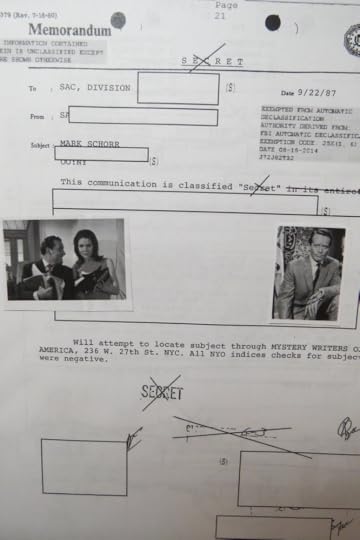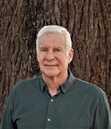Mark Schorr's Blog
September 25, 2022
Archery in Popular Culture, Starting in 1678 - 3 of 3
In the previous blog I offered some of the many mythological gods and goddesses who were armed with a bow. This popularity has continued into the popular culture. I’m sure that many who show up at the range have been influenced by the media.
My favorite archer is Hawkeye, the Marvel character with a bow and uncanny hand to eye coordination as his superpower. As he’s aging out, he’s passing on the super archer mantle to a young woman, Kate Bishop.

DC comics has their own archer extraordinaire, Green Arrow. Green Arrow goes back to 1941 and has a Batman with a Bow vibe.
But no discussion of great archers could leave out Robin Hood. Twice, with all the thousands of arrows I’ve shot, have I had the achievement named after the great archer, where I hit the bullseye, and then with a second arrow hit the rear of the first arrow.
The first known mention of Robin Hood came in a ballad in 1678, The Noble Birth and Gallant Atchievement (sic) of that Remarkable Out-Law (sic), Robin Hood. There have been hundreds of ballads, books, movies and TV shows since. Famous actors who have donned his green include Douglas Fairbanks, Errol Flynn, Sean Connery, Kevin Costner and Russell Crowe.
But it seems like recently the image of the heroic archer is more often seen with a female character. Perhaps the best known is Katniss Everdeen, the hero of Suzanne Collins’s The Hunger Games. Katniss' first name comes from a plant called Sagittaria, or arrowhead, which has an arrow-shaped leaf., This wetlands plant also shares its name with the constellation called Sagittarius, or "The Archer". And her skills with a bow certainly are vital to her staying safe in the life-or-death competition.
Other notables include Princess Merida in Brave, who uses archery to avoid an unwanted wedding; Susan Pevensie in The Chronicles of Narnia, who has a magic bow given her by Father Christmas; and Princess Zelda and her bow of light in the video game Legend of Zelda.
I nerd out on archery, watching YouTube videos. Some critique the accuracy of media portrayals of archery. From knowledgeable critics, Princess Merida gets a higher rating that Hawkeye, who doesn’t have a consistent anchor point and shoots-thanks to CGI- in ways that defy physics.
If you want to see amazing real archery, check out Lars Andersen.
At the Washington Park range I have come to recognize the regulars. People not there just because they’ve seen a movie and bought a bow. There’s good natured camaraderie. For example, when an arrow gets lost in the grass, you’ll frequently see three or four archers taking the time to join the hunt. Or when someone gets a new bow, there’s envious chatter about specs. Sometimes if it’s crowded people will even share lanes. And there’s a quiver where people can leave damaged arrows-say one that needs fletching-and someone who has the ability to repair it can pick it up.
At the range, I first noticed Dee tutoring a child in archery, with the father standing nearby. I was impressed by Dee’s gentle but knowledgeable style. I spoke with my fellow ex-Brooklynite after the lesson and he became my teacher. He’s a certified archery instructor, clearly serious about the art.
As with many other sports, a key is repeating the exact same move and fine tuning it. Dee critiqued my posture, how I held the bow, my release. My shots get tighter on the target, but despite persistent feedback, I am always quick to fire. Rather than Olympic archery, he notes I am an instinctive shooter.
He has me hold for a count of five. Surprisingly difficult. He keeps it novel by having me shoot at balloons, moving targets, more distant targets. But always I am quick to release. Type A for archer.
After about ten classes, I return to shooting on my own. More accurate thanks to Dee, but still yearning for speed like Lars Andersen.
Ultimately I aspire for mindfulness, where hitting the target is not the goal. Making each shot consistent, a unique moment. But it sure is nice when the arrow thwacks into the bullseye.
September 5, 2022
Mythic Origins - 2 of 3
Standing at the line at the Washington Park archery range, I take my position, trying to be mindful of every muscle. Holding the bow forward with my left hand, tight but not stiffly. The aiming arm. I have a leather arm guard around the forearm where the string may slap. The bow pretty much perpendicular with the ground. My right hand is in a leather archer’s glove, just the middle three fingers and a strap to go around the wrist. I pull the bow back so my fingers are near my mouth. The kiss. When I release, the arrow has a slight whistle and then a musical thwack as it embeds itself in the thick plastic-wrapped hay target.
There’s something so primal and primitive about shooting. Helen MacDonald writes eloquently in H is for Hawkabout the joy she gets in falconry, knowing that what she is feeling and seeing is connected with the ancient. It is the same for me with archery. The same pleasure I get when I do tai chi chuan, or when I go to Torah study. Feeling the ancient lineage.
The term Torah itself has an archery history. The word Torah is derived from a Hebrew word that means “to shoot an arrow in order to hit a mark.” Torah is the arrow aimed at the mark, the target is the truth about God and how one relates to that which is holy. In ancient Greek there is a similar meaning, with to sin coming from “to miss the mark.”
Archery was clearly important to the Greeks. Artemis, the goddess of the hunt, was known for her archery skills. When the Romans adopted Greek gods, her name was changed to Diana. Which was the name I chose for the female protagonist in The Master Mind. The Stoics had a metaphor, similar to the Serenity Prayer, of balancing acceptance and change. One prepared one’s arrows, bow, posture. But then the arrow was loosed and the wind could pick up or the target move. Change switches to acceptance. Many of the Amazons supposedly cut off breasts so they would not interfere with their archery skills. Eros (aka Cupid) uses arrows to spread the love, as does the equivalent Hindu god Kamadeva.

And remember the climax of The Odyssey, when Odysseus returns home to find his house infested with suitors pursuing his wife Penelope. She has delayed them cunningly, and the test is who can successfully use her missing husband’s bow. Needless to say, the disguised Odysseus can, and uses it to kill the suitors.
Archery turns up in many religions. In Japanese Shinto, many of the gods and goddesses are shown with bow and arrow. Amaterasu, the sun goddess, carries 500 to 1000 arrows. Her equivalent in Greek mythology, Apollo, is also an outstanding archer. Japanese Aizen Myo-o, Tibetan Kurulkulla, Hindu Kama and Cupid are all archers associated with love. Skadi, in Norse mythology the goddess associated with archery, was worshipped by the Vikings for her excellent skills with a bow as well as skiing. A primitive biathlon. And Muhammad also spoke of the importance of the spiritual practice of archery.
It’s not about hitting the bullseye, though of course that is always nice. It’s being both in the moment and immersed in the flow of time. My immediate ancestors were urban, but somewhere along the way there were men, and maybe some women, who pulled the arrow back and let it loose, eyes fixed on a target. Probably something or someone they needed to kill. I can be grateful that my goal is not as life and death. Just being centered and mindful as the arrow cuts through the air.
While the hand-to-eye ability of being a skilled marksman with a gun is equal to being a skilled archer, using a bow requires more strength. And there’s no such thing as an automatic bow that can spew dozens of arrows in seconds. Bows are more like muskets, where each shot is individual and important. A nice cue for mindfulness.
August 25, 2022
Taking a Bow - 1 of 3
“Hot!” I shout, not as self conscious as I was the first time I yelled it out. It’s the cue to my fellow archers that I am about to shoot. I’m at the archery range at Washington Park. There’s four other people on the dozen lanes. The one furthest away has a compound bow. Its more powerful, more accurate, with all kinds of high-tech options. His arrows have little glowing lights at the nock, the tail end. He can see exactly where they hit even at 75 yards.
Three lanes closer is a couple, taking turns with a recurve bow similar to mine. He is more experienced, teaching her, and there is as much flirting as archery going on.
A couple lanes closer still is a Native American man in his 20s. He has a store-bought horse bow, shorter than mine, but he tells me proudly that he made his own arrows.
I have a fiberglass and wood bow with 32-pound pull. That’s the draw weight-how much energy it takes to pull the string back and get ready to fire. That puts it in the low to moderate range. Good for target shooting but not appropriate for bow hunting. Which is fine because my targets have always been paper.
Zen and the Art of Archery, originally published in 1948, first introduced me to the meditative joy of archery. While the sword gets all the glamor, in truth the samurai regarded being a skilled archer as at least as important. There’s a festival in Kyoto I once got to attend, Yabusame, where archers on galloping horses shoot arrows at three targets. Participants were clad in samurai armor, with the two-meter-long Japanese bow, galloping by targets and loosing arrows. The only discordant touch was many wore eyeglasses. For spectators’ sake, it was better they shatter the mood than let a myopic arrow fly.
It is the warrior tradition around the world that makes the bow such an iconic tool. Other hunters and warriors may have gotten by with blowguns, or atlatls, bolas, slingshots or yo-yos. But from the samurai, to the Mongols, to the Greeks, the Nubians, the Egyptians, the Scythians and on, archery was an essential skill.
Archery has been a hobby for me for decades. I incorporated it into The Master Mind, making the female lead, Diana Wynne, a skilled archer.
As with so much of human history, the first known evidence of archery comes from Africa. At Subudu Cave in South Africa they have found arrows estimated to be 64,000 years old. Though bow and arrow are associated by most with Native Americans, there’s debate as to just how long ago arrows first flew in the Americas. Some believe the first arrows were fired 20,000 years ago, others put it as recent as 500 CE. But there is no doubt it became an essential tool of indigenous peoples from the Artic to the southernmost parts of South America.
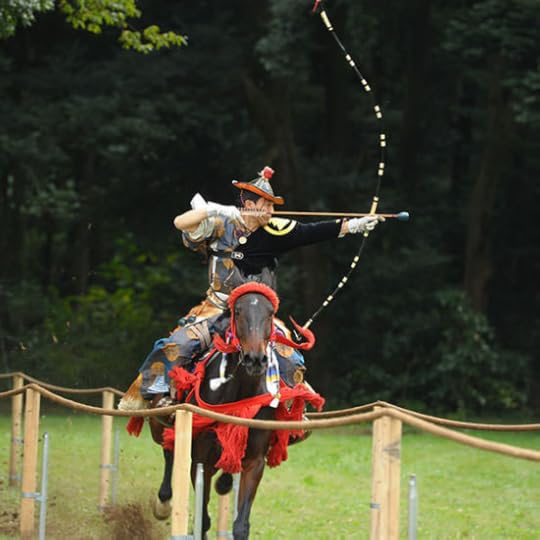
July 12, 2022
24 - To Pacific Premier Group
Paul Conti has a Stanford Medical School and Harvard (chief psychiatric resident) pedigree. But it was his compassion for clients and an appreciation of therapists that was remarkable. Many psychiatrists wind up doing biological psychiatry. As medical doctors, their primary, and for some sole, treatment is offering medication. Paul really appreciates the value of good therapy toward making positive changes.
Although based in Portland, he was working to build a national, and at times international, practice. I’m licensed in Oregon and New York, which was beneficial as I joined the Pacific Premier Group. A mix of counselors, coaches, psychologists, psychiatric nurse practitioners and psychiatrists. Each of us are independent contractors, working together as a diverse multi-disciplinary team. A great balance of independence and mutual support.
I obviously can’t go into the clients we see. But when Paul wrote a book it included endorsements by Lady Gaga, Tommy Hilfiger, Carole Bayer Sager and Kim Kardashian.
I’ve personally worked with a Marvel superhero and a supervillain. Not in the same session and with no explosions, flying or uncanny feats of strength evident. With billionaires and celebrities, the cliché was true, money, power and/or fame doesn’t bring you happiness. In some ways, just a different type of misery. I got to visit clients in settings far more posh than I could ever afford. Limousine pick ups and such. Not being overwhelmed by the financial resources required a different skill set from how I started, where it was not being overwhelmed by the lack of resources.
As satisfying as the practice was, the call to write was strong. Writing fiction remained a wonderful escape, a chance to go into that world where I had complete control over how the story progressed. It took me about a year to write and edit and edit and edit The Master Mind.
The story was sparked by my being a participant in federally-funded ESP experiments. The researcher, Charles Honorton, was a nice guy. But what if he was more like the psychologists who helped the CIA fine tune torture for enhanced interrogation? I had some unusual EEG activity and my ESP results were intriguing (several positive hits) but not statistically significant. What if my character did show definitive signs of ESP, and the psychologist who ran the experiment was determined to use him to prove its existence? Captain Ahab and Moby Dick.
Then it took a year to sell the book. I had been away too long from my previous agent, who had only sold my books to a publisher that had published me before. And that publisher, having my past works be a barely break-even proposition, was not responsive. Though self-publishing had blossomed from vanity presses to a thriving industry, I wanted someone else to see that the work was marketable. And I didn’t want to deal with all the subsequent logistics of getting a book out.
I was fortunate to connect with Mike Aloisi at AM Ink Publishing. While I had good connections with St. Martin’s, it’s been an amazing experience having a publisher who is so immediately responsive and collaborative. For example, he asked for suggestions for a cover for The Master Mind. I came up with the idea of Rodin’s Thinker with an EEG cap. I had my son, who does graphic design-and developed this web site-do a rough. But my son had his own idea and asked if he could submit it as well. I said sure. Mike liked it so such he hired my son to do it. I have never been happier at having my idea rejected.
June 22, 2022
23 - Over the Borderline
In 1992, renowned psychiatrist Dr. George Vaillant wrote an article entitled The Beginning of Wisdom Is Never Calling a Patient a Borderline; or, The Clinical Management of Immature Defenses in the Treatment of Individuals With Personality Disorders. A mouthful of a way of addressing the long-time prejudice against people with BPD. There’s a concept in psychodynamic psychology called object constancy. This is what makes babies like peekaboo. If they can’t see you, you don’t exist. Lack of object constancy is cute in babies, not so cute in adults. So an adult struggling with it might text 30 times in an hour when they don’t get a response. And then respond angrily when they finally do. The sensitivity to real or perceived abandonment and impulsivity for immediate soothing leads to drugs, sex, gambling and other short-term rewarding behaviors. And the overwhelming emotions leads to self-harm or suicidality. Many therapists will avoid taking on clients with a BPD diagnosis.
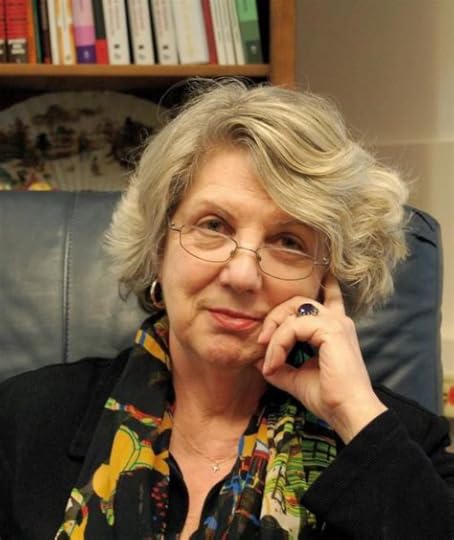
Marsha Linehan, developer of DBT
Not Portland DBT. Clients with BPD were welcomed. Often we were a court of last resort, clients who had blown out or been thrown out of clinics all over town. Not every client at Portland DBT had a borderline personality disorder diagnosis. Many struggled with trauma, depression, anxiety or substance abuse. And some clients had other personality disorders, most notably narcissistic or antisocial personality disorder. This would be some of the most difficult clients, who were not responsive to treatment. Like the client I had who had stabbed his wife and was verbally aggressive with me. His narcissistic personality disorder was worsened by the steroids he was taking. One session with him was one of the few times in my career when I was visualizing how I would knock a client down if he came at me.
One of the rules at a full fidelity DBT clinic is being available by phone 24/7. You can see how this addresses the object constancy dynamic. But it’s hard on clinicians. To survive as a DBT clinician you had to train clients as to when it was a genuine emergency, and when it was just seeking reassurance. The latter was not an acceptable option and would lead to frying the clinician and ruining the relationship.
Although there was high turnover of therapists, the camaraderie was strong. It was a great place to learn and have clinical skills tested. And clients with BPD usually had significant trauma histories. If a clinician could access compassion for that trauma, they could help clients to genuinely get better.
The psychiatric powers that be, who author the Diagnostic and Statistical Manual of Mental Disorders (DSM), reportedly debated renaming BPD as complex relational trauma. But due to politics and personalities, it didn’t happen. Thanks to DBT, borderline personality disorder is more treatable than any other personality disorder.
I obviously cannot go into any details about clients. But I can say that I could connect with all but a handful of them. I found I could relate to clients with BPD, appreciating their pain. They just had difficult ways of seeking connection, like cutting themselves or threatening suicide. I stayed at Portland DBT eight years, which was five years longer than most.
My frustrations over tough administrative policies and lack of reward for seniority grew. And working with clients with BPD, you had to bring your best game with no hidden resentments. I remember one time, when I had had a personal problem, and I went out to greet one of my more severely impaired clients in the waiting room.
I said, “Hi,” and she said, “What’s the matter? Did I do something wrong?”
When you come from a traumatic background, you get very good at reading other people. Better than most clinicians.
I recognized I was burning out. And my daughter mentioned that her former college roommate was now the office manager for a psychiatrist who wanted to build his practice with more therapists.
So I went to meet Dr. Paul Conti.
June 14, 2022
22 - A Borderline Fixation
With what I had learned about psychology, and being based in Portland, I wrote two novels-Borderline and Fixation--with a new protagonist. He was a combat veteran who, surprise, surprise, worked as a crisis clinician in Portland in a community behavioral healthcare setting. Critics praised the psychological detail. I’m not a combat veteran but I had worked with and known some and had worked with dozens of people who had survived traumas.
There was the unusual, like the man who had been hit by a car while in bed. His bedroom was near the front of the house and a car had smashed into it while he was sleeping. But all too common was childhood sexual/physical/and emotional abuse. One client speculated that my walls should be covered with slime because of all the horrors that had been recounted there.
Writing fiction was a way that I coped. As a writer, you have the ultimate power. Who lives, who dies, good people rewarded and bad people ultimately getting punished for bad deeds. An outcome I often did not see in real life.
It is strange when writing a novel and characters develop their own voice and identity. Whether coming out of a writer’s subconscious or some mystical-magical place, stories take their own twists and turns. A minor character in the first draft turned out to have such an interesting story that they took on a life of their own. A main character turned out to be a dud, and had to be killed off, or not even written about in later drafts. I struggled with one novel where the villain was just so much more interesting than the hero that I wasn’t able to make it work.
I do outline but that is subject to change. Lots of change. An outline is helpful in the beginning, a seemingly clear road map. But then the scenery is just so much more interesting at an early exit, that I deviate from the planned route. With The Master Mind I had an entirely different ending that I changed. And the whole book was originally a first person/third person hybrid, that I changed in later iterations to all third person.
But I digress. Meanwhile, back at the community behavioral healthcare ranch my frustrations were building, and the pay was never rewarding. I had a new supervisor I was less than thrilled with.
While working at the agency I had met, and become friends with, psychologist Soonie Kim. She was all enthused about a then relatively new therapy called DBT. Dialectical Behavioral Therapy. It had been developed by University of Washington psychologist Marsha Linehan to treat borderline personality disorder, a notoriously difficult condition to treat that often inspired antipathy in clinicians. People with borderline personality disorder are frequently angry, suicidal, and impulsive. They often have addictions and are highly sensitive to real or perceived abandonment. Eventually, Linehan would disclose that her pioneering treatment came out of her own suffering.

Marsha Linehan
Soonie had built a successful independent clinic. I went to work for her at Portland DBT.
June 7, 2022
21 - My Career at Cascadia
As a staff clinician at Cascadia Behavioral Healthcare, my writing largely consisted of assessments, treatment plans, and chart notes. I started out as many clinicians do writing notes that were akin to War and Peace, trying to capture every moment of the 50-minute session. But with ballooning caseloads there was enormous pressure to write short. My notes morphed into, “Client showed up. Depressed and anxious. Stable. Will return next week.” At least I wrote notes-some of my colleagues gave up under the strain and didn’t even bother. As one said, “I didn’t become a therapist to do charting.”
Eventually, I struck the balance with clever use of boilerplate. “Casually dressed, well-groomed he arrived on time unaccompanied. He made good eye contact and was responsive to questions with a pleasant demeanor. No suicidal or homicidal ideation. No psychotic process or substance use reported. Oriented times three with speech normal rate, rhythm, volume. Insight and judgment good.” That would be the objective part of the note for an ideal session. Throw in a quote at the beginning for the subjective part, a diagnosis and brief clinical formulation and then plan, and you’d have a classic SOAP (Subjective, Objective, Assessment, Plan) note.
Clearly not the most fulfilling writing but it fulfilled the clinical/administrative/billing/legal need to chart.
Community behavioral healthcare clients (there’s a debate about calling the people we worked with patients, clients, customers, consumers) were often struggling with so much adversity. Even before they were born, some had been exposed to alcohol. There were so many cases of child abuse. Lives with poverty, criminal justice involvement, shattered families, racism and other problems that made surviving with one’s sanity a tribute to resilience.
Over the years, I rose from staff clinician to site manager to manager of a couple of sites focused on depression, anxiety, trauma, substance abuse and personality disorders. I saw hundreds of clients and ran dozens of groups. An exhausting pace but often rewarding.
Then I was made director of staff development, in charge of training. I built that program over the years and was told by a Portland State University professor that it was the largest non-academic training program in the region. Cascadia had grown to about 1500 employees and close to 50 sites in four different counties. We offered dozens of trainings from HR basics like blood borne pathogens and preventing sexual harassment to dozens of clinically focused trainings. I supervised three people and we brought in outside specialists. I got to write dozens of trainings and became fluent in PowerPoint.
An amusing story--My daughter, then in middle school, was also being taught PowerPoint. I decided to let her jazz up my presentation. When I showed it to one of our IT people, the tech speculated that it would cause seizures. My young daughter had included virtually every special effect that PowerPoint could offer, with letters dancing, exploding, turning into ants and slides rapidly changing color and spinning off into space.
A not so amusing story--I was certified to teach a non-violent method of crisis de-escalation. It included a few techniques for breaking holds and grabs by aggressive patients. When I did trainings, I would ask the biggest person there to grab me so I could demonstrate that it worked. At one training, the audience member I chose grabbed me around the neck and had a psycho look in his eye. He was instantly choking me with all his strength. Fortunately, the technique worked. I broke his hold and stepped back. But I had bruise marks on my neck for a week where his thumbs had been.
I developed a good reputation as a trainer, doing trainings on mental health issues all over Oregon, in Washington, California, New York, and even China. The last one came when David Powell, an expert on clinical supervision, invited me to present at a conference at Beijing University. A very receptive audience, and fascinating to see how people have similar problems in such different settings. Or how things we take for granted, like privacy, were sometimes alien. Explaining the idea of Alcoholics Anonymous, for example, was a difficult concept for Chinese participants.
Then the Cascadia leadership decided to utilize my previous career as a reporter, and I became director of staff development AND communications. I was in my new position for a week when the company announced massive layoffs. Reporters came to me, most with a challenging air. But I knew both sides of the fence, even though I was now “a flack.” I played fair, spoke honestly, and while no one became my friend, I managed to develop a few less-than-combative relationships.
I did things like put out a company newsletter and a promotional CD. As well as press releases, responding to media inquiries, even driving the van and acting as tour guide when county officials wanted to view our sites.

2004
Cascadia continued to grow and many speculated that it just got beyond the capabilities of the executive team. Or it was due to politics and conflict with Multnomah County, a major funder. The county ultimately decided to cut back on Cascadia, and we went from handling 80 percent of the county’s behavioral healthcare business to 40 percent with the balance being divided up among other non-profits.
But I stuck with Cascadia. I had a supervisor I respected and a great team I worked with. There were constant frustrations as we struggled with limited resources, but the pride that came with doing good in a difficult situation.
And I had my outside of work writing as an escape.
June 1, 2022
20 - A Bomb Next Door
One day at work I remember clearly, from what went on outside of work. My wife knew not to call me. I was always back-to-back with clients and harried. So I knew something urgent had happened when the voicemail from her began: “Don’t worry, it’s okay, nothing to worry about, everything’s fine, nothing to worry about, no big deal, but a bomb just blew up in the driveway and police are evacuating me.”
Needless to say, I raced home, asking support staff to truthfully tell clients there was a family emergency. When I got to the house there were police in RoboCop-like armor with mirrors on sticks walking around looking under cars on the street.
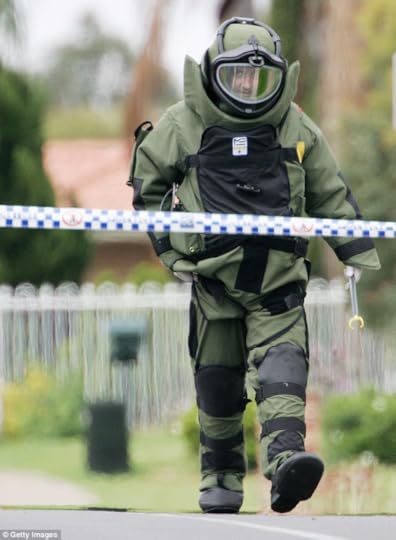
The bomb squad had decided there was no further threat and my wife had been allowed back in the house. She described the explosion as like someone had lifted the house up and slammed it back down. The driveway next to our house belonged to our neighbors. She had seen our neighbor lying on the ground, his leg a mangled mess and been among the first to call 911.
For the weeks until the bomber was arrested, all the neighbors remained on edge. Would there be further violence?
I had been working in the driveway the weekend before, repairing our fence. The fence held up well, though we had shrapnel in our backyard. A hole was punched in the neighbor’s garage and a house across the street had a window smashed. Our home was right near the school, where our kids were held in lockdown after the bomb went off. And our neighbor wound up with a prosthetic leg.
Detectives ultimately determined the target of the bomb had been our neighbor’s son. A former “boyfriend” of his current girlfriend had been jealous. The former “boyfriend” was 41, the girl had been 13.
Due to problems with the search warrant, the prosecutor had to let the pedophile bomber take a plea, dropping 14 additional charges and winding up with a 12-year sentence.
May 24, 2022
19 - Challenges of a Rookie Therapist
After my internship, Southeast Mental Health Network offered me a job on the crisis team. I took it, even though I preferred doing longer term therapy. The team was a fun group, with practical jokes common. There was great camaraderie during the frequent down time, and great collaboration when working with the acutely suicidal. Crisis work entails getting people to safety and back to baseline, not facilitating long term positive change. The office itself was in a fortress-like one story building with barely any windows. It had once been some sort of financial institution and our office supplies were stored in what was literally a vault.

When there was an opening on the therapy team, I took it. Then the Oregon Health Plan kicked over, which made many more people eligible for benefits, including therapy. SEMHN grew and morphed into Network Behavioral Healthcare. I soon actually had an office with a window in a new office building. My view was of the revolving milk carton atop the Sunshine Dairy.
I was good at my job, learning how to listen to tales of trauma when I was a child. My mother, a survivor of Nazi Germany, had told me stories early on of just how dark the human condition could get. I was able to sit with clients and listen in a genuine way. Which is as helpful, maybe more so, than all the techniques and skills I learned in grad school.
Not every case had a happy ending. But in all my years of working with struggling clients, I have had only one die due to suicide. Of course, some are still alive thanks to the skills of ED doctors. Or their multiple suicide attempts being the proverbial cry for help and not at a level of lethality that would lead to the morgue.
One of the scariest clients was a man who mixed narcissism and paranoia with stimulant abuse. He started sending me death threats by e-mail. “You’re not going to do to me what you’ve done to others. I’m going to shoot you until you are dead.”
I contacted the police and was told, “People who make threats don’t usually follow through. Call 911 if you see him.” This was shortly after Portland Police Bureau officers had shot and killed a patient inside a psych ward. They were skittish about any action involving the mentally ill. Ultimately, the client threatened a judge and showed up at his chambers. The client then went to jail without passing go or collecting $500.
May 17, 2022
18 - The Name’s Schorr, Mark Schorr
My dress shoes were uncomfortable and so I wore funky old sneakers. This may seem like an irrelevant detail but stick with me. My plan was to visit the Russian consulate and then go to the Mystery Writers of America dinner crosstown. The visit was part of my research for my spy novel, The Borzoi Control.
At the Russian consulate I gathered a bunch of handouts and managed to offend the stern-looking blonde working the desk. Being a big believer in “speaking the language,” I tried out the “hello” I had learned. “Previet” was easier than the longer more cumbersome greetings. But she glared and I asked what was wrong. “Is not polite enough,” she said. I apologized, tried and failed to make chit chat, and headed out.
I had heard that the consulate was under 24/7 FBI surveillance and decided to test it. I walked in one door at the giant toy store FAO Schwartz, doubled back and exited another. Then I went into Central Park and dig a zig zaggy surveillance detection route. Nothing. I took out my tight black dress shoes, threw my comfortable but worn sneakers in the garbage, and headed off to the Mystery Writers of America dinner. It was pleasant but uneventful, schmoozing with fellow authors and fans. I think I was too gushy with Elmore Leonard.
A month later I got a call from the secretary at MWA. “The FBI called and was asking about you.” Of course, I thought she was kidding but she reassured me she wasn’t and gave me the agent’s name. Cervantes. Again I thought she was kidding as my first book had been described as “Don Quixote in a trench coat.” I called the main FBI number and asked for Cervantes.
It was actually a pleasant call-clearly just checking the boxes. He asked about my business at the Russian Consulate and I told him. I joked that the FBI should be sure to buy multiple copies of my book.
Remember the sneakers? I imagine that some poor FBI agent had to retrieve them from the garbage and dissect them. It was an unusual enough behavior that it could have been a dead drop, a way of passing information. The other takeaway is that a smartass amateur doing a surveillance detection route is no match for a professional group of watchers.
Years later, I did an FOIA on myself.

I had fun with some of the other pages:

